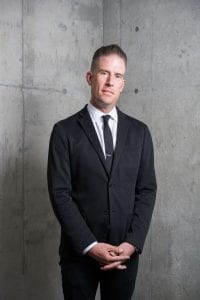A.J. Faas
Early Tenure and Promotion to Associate Professor
Years at SJSU: 4
Department: Anthropology
RSCA focus: Disasters, environmental crises, and displacement and resettlement, with a focus on the historical production of vulnerability, postcolonial practice, social memory, and community organizing and social support. His research has primarily been in Latin America, with some work conducted in the American northwest and the San Jose area.
Associate Professor A.J. Faas’s work in post-disaster resettlements in highland Ecuador has led to several recent publications including a study on reciprocity and vernacular statecraft and one on the conversion of peasants into “entrepreneurs.” Closer to home, he has studied wildfire responses in the Pacific Northwest.
In his time at San Jose State University, Faas has also enjoyed planning and organizing his department’s annual AnthROX! event. It is one part party with refreshments and live music, one part expo of the best of Applied Anthropology at SJSU, with multimedia exhibits and “Ignite Talks” by graduate students, alumni, and emeritus faculty.
As a first-generation student himself, he encourages anthropology majors to get involved beyond their classrooms.
“My entire career began nearly two decades ago when I shyly walked into my department chair’s office and asked if there was a way for me to get experience working on a real study,” Faas recalls. “He got me working that day, and I’ve never looked back.”
Note: Congratulations to the 43 faculty members who received tenure and/or promotion for 2017-18. We have invited each faculty member to participate in a series of posts profiling their teaching, service, and research, scholarship and creativity activities. Those faculty who opted to participate will be featured throughout the fall semester on the Academic Spotlight blog and the digital sign in the Administration Building lobby.


